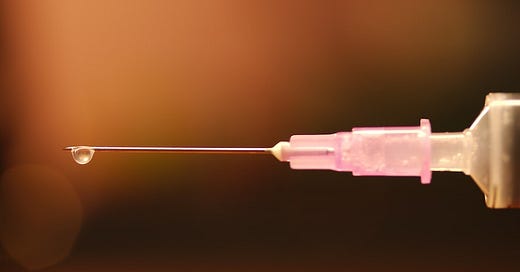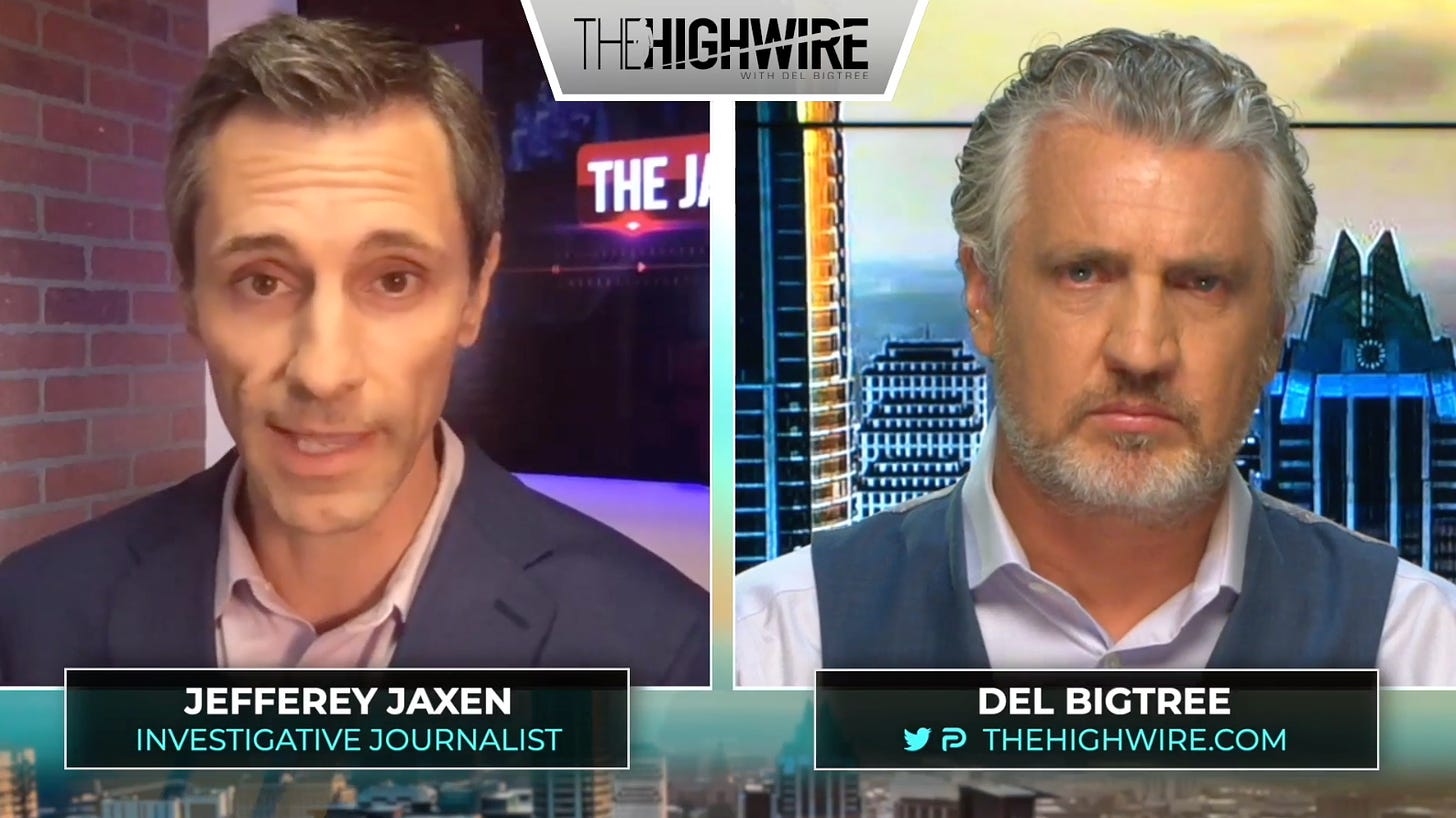This is a quick story to help a curious mind walk through the maze that was the FDA approval of Comirnaty.
SUMMARY OF THE PLOT AND TECHNICAL CAVEATS
On August 23, the FDA approved Comirnaty. Their Comirnaty webpage says the following:
On August 23, 2021, the FDA approved the first COVID-19 vaccine. The vaccine has been known as the Pfizer-BioNTech COVID-19 Vaccine, and will now be marketed as Comirnaty, for the prevention of COVID-19 disease in individuals 16 years of age and older. The vaccine also continues to be available under emergency use authorization (EUA), including for individuals 12 through 15 years of age and for the administration of a third dose in certain immunocompromised individuals.
There are two technical caveats to pay attention to in the initial approval:
Caveat One: When the FDA approved the Pfizer v-e recently, they approved the version that is not yet in production (“Comirnaty”)—while the one that is currently in production is still technically under the EUA. The FDA further said that the two products were identical in terms of formulation but legally distinct.
Caveat Two: When it comes to the legal aspects of any product in the U.S. defined as a “v-e,” it’s important to pay attention to what age group it has been approved for. If a v-e is approved for children, it legally falls under “childhood v-es” even it is also used in adults—in which case, in accordance with the 1986 National Childhood V-e Injury Act, the patients who claim injury from the product and seek compensation or other remedies need to follow a special legal process, which is different from the process an American citizen is expected to follow with consumer products of therapeutic drugs.
The 1986 Act:
Provides that no vaccine manufacturer shall be liable in a civil action for damages arising from a vaccine-related injury or death: (1) resulting from unavoidable side effects; or (2) solely due to the manufacturer's failure to provide direct warnings. Provides that a manufacturer may be held liable where: (1) such manufacturer engaged in the fraudulent or intentional withholding of information; or (2) such manufacturer failed to exercise due care. Permits punitive damages in such civil actions under certain circumstances.
The history and the fine details of this legislation are outside of the scope of this story but if you are curious, there is a very informative and comprehensive film called, “1986: The Act.” I highly recommend it.
But in practical terms, the legal process reserved for childhood v-e injury claims involves going through a special v-e court—and if the injured party proves that there was injury and that it was caused by the v-e, the compensation is paid out of taxpayer money—as opposed to out of the manufacturer’s pocket. (That is the process defined for fully approved childhood v-es. The v-nes under EUA follow yet another separate legal process, and reportedly the EUA process is as good as a bureaucratic blackhole as far as being able to get compensated.)
But back to our Comirnaty. When the FDA gave it its full approval, the age group did not include children, which put the product (not yet in production) in the category of products where the manufacturer would be liable for proven injury just like they would be liable in case of a proven injury caused by therapeutic drug. Now—and this is my legal speculation—if the FDA approved the actual current Pfizer COVID v-e (i.e, exact same approval they did but without throwing in a new nominal product, not yet in production), it would have created a window of opportunity for the poor souls who have gotten injured after the full approval to file their lawsuits.
The matter of cause and effect is, again, outside of the scope of this story—but given the number of reported injuries so far, the number of lawsuits could be potentially massive.
However, because the product that has received the full FDA approval is legally separate from the Pfizer v-e that is currently in use, those who are receiving the original EUA Pfizer v-e still can’t sue Pfizer, since for the EUA product, Pfizer is protected through the teeth under the PREP Act. In short, the approved product—for which people can sue—does not exist, and the one that exists does not allow to sue. I would say that introducing a nominal product was a genius legal move!
But wait. Maybe when Comirnaty finally hits the market, the injured parties be able to sue the manufacturer after all? And here’s where it gets even more elegant.
A few days after the FDA full approval of Comirnaty, CDC’s Advisory Committee on Immunization Practices (ACIP) recommended it for childhood use, which supposedly placed the product into the category of “childhood v-nes” and closed the window of opportunity for potential lawsuits against the manufacturer. Thus, when Comirnaty officially hits the market, Pfizer will enjoy legal immunity. Nice!!
In the words of Dr. Meryl Nass,
This seemingly minor recommendation, which did not get headlines, moves the licensed Comirnaty vaccine from a place where the manufacturer is legally liable for injuries, to a berth within the Childhood Vaccine Injury Compensation Program, for which there is no manufacturer liability. Instead a $0.75 excise tax is charged per dose, which goes into a fund administered by DHHS to pay for injuries, if one is lucky enough to convince the special masters (judges) in the program that a vaccine caused your injury. Once a vaccine is recommended for children, its liability is waived no matter who receives it.
Meanwhile, the Comirnaty package insert says this:
COMIRNATY has not been evaluated for the potential to cause carcinogenicity, genotoxicity, or impairment of male fertility.
So I guess we’ll see…
IF YOU WANT GO DEEPER:
When it comes to the initial approval, Jefferey Jaxen did a beautiful job of analyzing it on The Highwire in great detail. I highly recommend you watch it.
Legal analysis starts at 09:36, then a few minutes in their computer crashes and they go into a commercial break and resume the discussion at 13:23.
The FDA page about Comirnaty
FDA approval letter
Comirnaty package insert
FDA press release
Factsheet for healthcare practitioners (EUA version)
European Medicines Agency page
1986 Act (legislation)
1986: The Act (film)
Interim Clinical Considerations (CDC)
Meryl Nass, MD, on ACIP’s recommendation
Does the FDA think these data justify the first full approval of a covid-19 vaccine? (BMJ)
More than 100 Ontario youth sent to hospital for vaccine-related heart problems: Report (Toronto Sun)
CDC says vaccine link to heart inflammation is stronger than previously thought (The Hill)
Myocarditis and Pericarditis Following Vaccination with COVID-19 mRNA Vaccines in Ontario (Public Health Ontario)





Hi Tessa, thank you for your update on this.
In my opinion, there's no way the drug maker's lawyers -- in this case Pfizer's lawyers, would ever let their liability-free status temporarily slip when it specifically comes to a "vaccine" product of theirs.
Never the less, I do commend all those investigating how the drug maker's lawyers pull/pulled this off -- as investigations like these can and do pay dividends.
If the drug maker's liability-free status did temporarily slip, then suing them directly for an injury/death and winning would garner a larger money-payout than if going through NVICP or CICP. (note: and where NVICP pays out more than CICP). Ultimately, potentially causing the drug maker to decide to stop making the product -- because the incoming lawsuits are too many and too costly.
(Though it would be interesting to know if there are any injury lawyers currently making court filings stating "covid-19 vaccines" are not "vaccines" and that the drug makers and the FDA and the CDC are abusing the laws in regards to "vaccines" -- when it comes to the so-called "COVID-19 vaccine" product, that's a topic for a separate discussion)
~
Regarding the ACIP vote on Aug 30, 2021,... Helen Branswell -- reporter for StatNews -- confirms [paraphrasing]:
On Aug 30, 2021, ACIP voted 'yes' (unanimously, 14 - 0, with 1 abstention) on the following ACIP Recommendation:
"The Pfizer-BioNTech COVID-19 vaccine [*] is recommended for people 16 years of age and older under FDA's Biologics License Application (BLA) approval [**]"
[*] They do not add the marketing name of the vaccine -- 'Comirnaty'. But, that should not be an issue.
[**] "BLA": the official name of the full-license
For the above, see:
https://twitter.com/HelenBranswell/status/1432425306690932739
https://twitter.com/HelenBranswell/status/1432426365542875140
https://twitter.com/HelenBranswell/status/1432430655581851654
For the above, also, see:
https://www.cdc.gov/vaccines/acip/meetings/downloads/agenda-archive/agenda-2021-08-30-508.pdf (3:00 [pm ET] Discussion, VOTE, Pfizer/BioNTech COVID-19 vaccine for individuals ≥16 years of age [under BLA])
https://www.cdc.gov/vaccines/acip/index.html
~
Does that mean that -- for children 16 and 17, AND for adults -- that injury claims now move from the CICP tribunal to the NVICP tribunal -- if one takes the Pfizer vax? (tribunal = United States Court of Federal Claims)
Well, there is this statement from HHS's HRSA -- regarding "[NVICP] [1986 Act] Covered Vaccines":
"For a vaccine to be covered [by National Vaccine Injury Compensation Program ([N]VICP)], the Centers for Disease Control and Prevention (CDC) must recommend the category of vaccine for routine administration to children or pregnant women, and it must be subject to an excise tax by federal law."
see: https://www.hrsa.gov/vaccine-compensation/covered-vaccines/index.html
But, there is NO update (yet) on this "[NVICP] Covered Vaccines" page regarding the Aug 30, 2021 ACIP vote, nor seemingly any announcements (yet) in the Federal Register (https://www.federalregister.gov/agencies/health-and-human-services-department) regarding the Aug 30, 2021 ACIP vote.
So, maybe there's no rush on HHS's side to make updates to their "[NVICP] Covered Vaccines" page AND their "Vaccine Injury Table" since the Comirnaty-labeled vials are (allegedly) not on the market yet.
So, after Aug 23, 2021, mostly likely, in my opinion, those 16 and over who take a EUA-labeled vaccine -- on/after Aug 23, 2021 -- will still be shunted over to CICP for injury claims. But, whether they're shunted over to CICP or NVICP, the drug make is not exposed to injury claims.
~
Another scenario to potentially consider:
On some date after Aug 23, 2021, there are two 19 year olds (adults). One takes an EUA-labeled Moderna and the other takes a BLA-labeled (comirnaty) Pfizer. Both get severely injured.
The family of the "EUA-labeled Moderna" adult is going to be furious to learn that they're shunted of to CICP instead of NVICP -- like the latter adult is/would/should be.
~
In this current tyrannical political climate we find ourselves in, the best that those injured can hope for is that the so-called "covid-19 vaccine" becomes part of NVICP as quickly as possible (as the payouts are bigger than in CICP and they're awarded more frequently than in CICP).
Good summation of the issue. My facetious take on Comirnaty https://zero-sum.org/a-comirnaty-by-any-other-name-would-smell-as-suspicious/